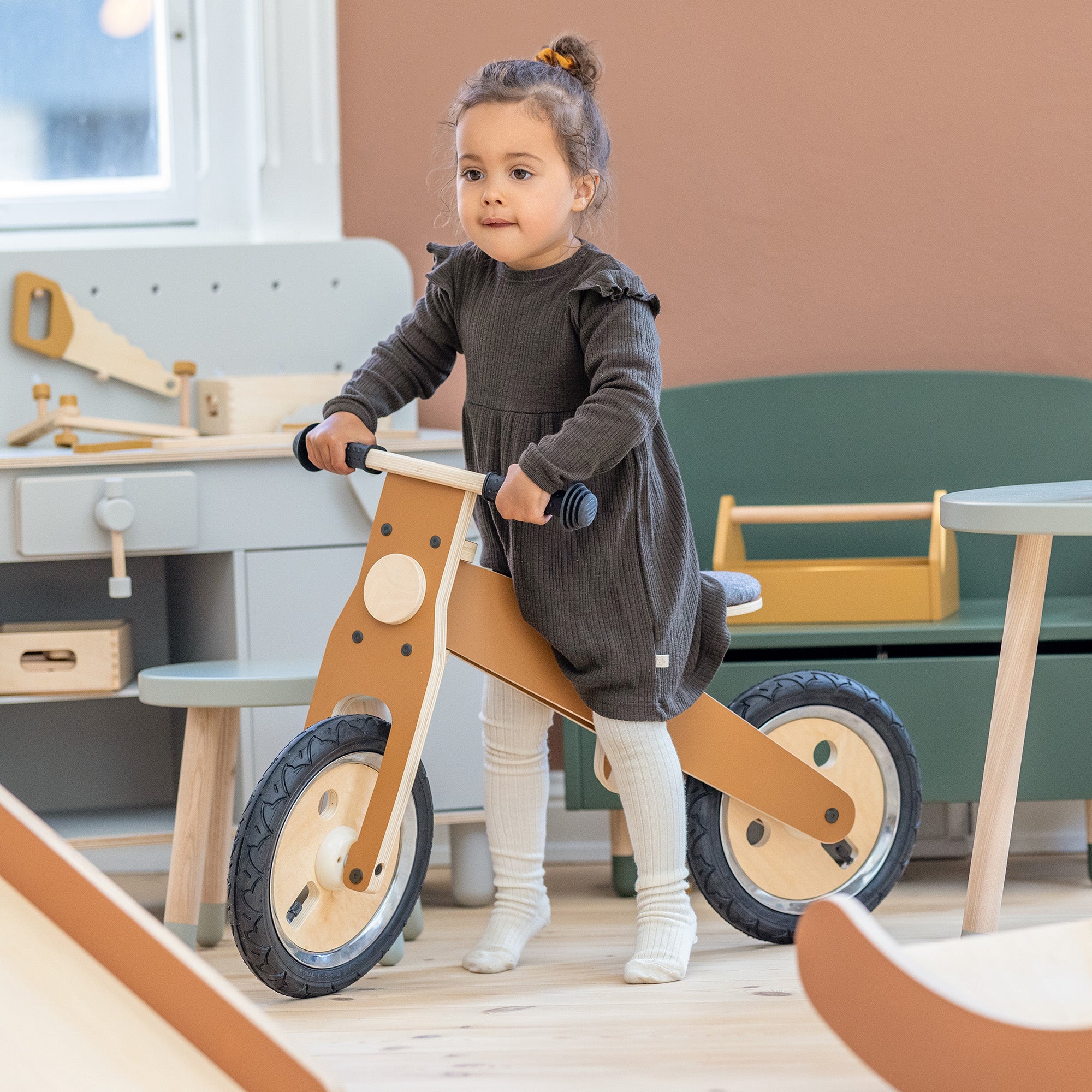Balance bikes, sometimes referred to as striders, are both fun and educational for little children to explore. Not only does this no-pedal bike train your child’s sense of balance, it also improves your child’s gross motor skills, muscle tone, body posture, and spatial awareness. Plus, riding a bike triggers a healthy lifestyle. Learn more about this stimulating toy by reading the article below – enjoy the ride!
Highlights:
- A balance bike is a no-pedal bike that eases your child’s transition into a traditional bike.
-
Balance biking comes with a lot of developmental benefits. It’s especially great for:
- Stimulating little children’s balance
- Strengthening muscle tone and improving body posture
- Improving children’s spatial awareness
- Your child is ready for a balance bike when they can plant both feet fully on the ground while sitting comfortably on the saddle.
- Choose a bike with rubber tires and soft handle grips for your child’s stability and comfort.
What is a Balance Bike?
Balance bikes are bicycles without pedals, but with two wheels, handles, and a saddle like a traditional bicycle. Balance bikes are designed to help your child focus on steering and balancing, making the transition into a traditional bicycle a lot easier for your little cyclist.
Developmental Benefits of Balance Bikes
Learning to ride a bike is not the only thing your child gains from balance biking. Danish expert in children’s motor development, Mette Vainer Wegloop, finds balance bikes are especially great for:
Stimulating Little Children’s Balance
“For small children, who have barely learned to run, it’s a very stimulating event to ride a bike. On a balance bike, your toddler learns to balance, steer, flex their muscles, and move their feet, all at the same time. This is simply a great workout for your child’s vestibular system, and this makes it more likely your child will feel positive about other movements, like swinging, sliding, dancing, jumping – paving the way for a healthy, active lifestyle,” says Mette Vainer Wegloop.
Working up Muscle Tone & Body Posture
“On a balance bike, your little one quickly learns how much muscle power sets the bike in motion. This knowledge helps your child work up muscle tone, which results in a ready, eager, and straight body posture. Around age 3, children begin to use their feet like adults, their rear foot forcefully pushing off from their toes and this rolling motion is also perfected on the bike,” says Mette Vainer Wegloop.
Improving Children’s Spatial Awareness
“Touring around the house is not just a fun activity, it also develops your child’s navigational skills (finding the best route), motor planning (learning to turn corners), spatial awareness (learning to get around obstacles), and proprioception (your child’s ability to adjust their body position to match external surroundings). Try making an obstacle course where the level of difficulty matches your child’s age – it’s great fun!” says Mette Vainer Wegloop.
Which Bike to Choose?
“When your toddler can plant both feet fully on the ground, while sitting comfortably on the bike, it means your child is ready for riding the balance bike,” says Mette Vainer Wegloop.
She has a few more tips for parents who are considering buying a balance bike:
- “Choose a balance bike with rubber tires, as this makes your little one feel safe and secure.
- Soft, non-slip handle grips ensure your child’s stability.
- Go for a bike with a bike saddle that’s not too bouncy and not too hard, as this increases your child’s comfort.
- If this is your little one’s very first bike, consider buying an indoor balance bike, so your child can explore balance biking close to their parents.”

